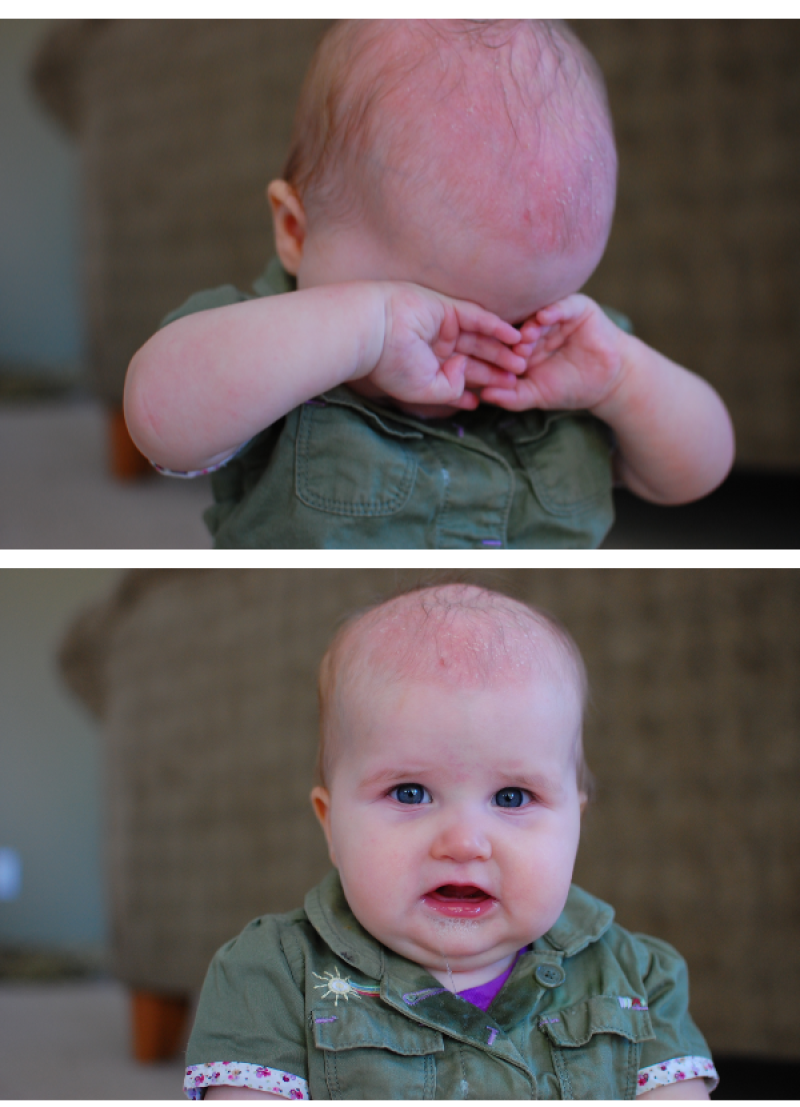

Games like playing peekaboo and activity such as crawling WIRES the brain to LEARN!
About a month ago our little princess took adorable to a whole new level when she discovered how to initiate games of peekaboo with us. At any given moment, she has a very ready audience! We are all mesmerized with the ginormous changes babies go through. I know all to well how quickly these tiny phases come and go.
It never ceases to delight and amaze me, especially as a biology junkie. I know how much this indicates wiring going on in the brain. She is actively learning and all of her increased mobility is not only an indication of brain growth, but also the means for wiring her brain to grow and learn more! I think it is so cool that as our brain grows and matures, we are capable of more intricate movement. And that at the same time, this movement is further wiring the brain to work more efficiently. I stand in complete awe at God’s creative power as I think about how He’s at work not just with what we can see, but the unseen.
We’ve also done things a little differently with this fourth baby of ours. I’ve embraced more fully the concept of baby initiated movement. {I’m not sure if there’s an official name for it out there, but this is what I’m calling it.} I knew that items like jumparoos and exercausers are bad for their spinal development, but didn’t realize that even holding baby in a standing position in our laps could have a similar effect. When I took Greta in to see a chiropractor at 4 months that was the first thing he talked to me about. I was completely shocked. But when he went into explaining why, he got me at the term – bilateral integration. This mama KNOWS all about bilateral integration. It’s as if he knew that I’d be speaking on that very topic in a few short months.
Bilateral integration is the ability of the left and right hemisphere’s of the brain to communicate and work together for smooth, coordinated movement and thought processing. Chiropractors as well as Occupational and Physical Therapists all are noticing a connecting trend between early walkers or those that skip the crawling stage with an increase of integration issues. Eeek. Bilateral integration is so critical for success in reading, writing, comprehension and creativity. Activities like crawling, skipping, brachiating on the monkey bars, etc all serve to help increase those important neural connections between the left and right hemisphere of the brain.
So it got me pondering and having to work hard to break myself of the habit of standing Greta up in my lap. It is hard to stop doing what has become second nature. And then I continued down that road and skipped trying to ‘help’ her sit up as I had done with my first two kids. Trey crawled so early, it was impossible to get him to sit…
If you have been around here a while, you know well that I’m a big advocate of having this kind of approach in the area of cognitive development in the early years. I advocate free play and hands-on, interactive learning in the early years instead of trying to rush toddlers and preschoolers into academic pursuits that their brains simply aren’t wired for yet… But honestly, it hadn’t occurred to me to have the same approach in motor development. With my two older boys I trained them to sit. I was the parent that held their hands and walked lap after lap around the house ‘helping’ them learn how to walk. Because by this point that is what they wanted to do, even if they didn’t have the motor strength and coordination to do it quite yet. This time around, I’m trying to retrain myself and let Greta move and try new things completely on her own by giving her ample time on the ground. I must say it is so exciting to watch her hit those milestones all on her own!
I found Dr. Emmi Pikler’s thoughts on child-initiated movement to be thought provoking,
“The learning process will play a major role in the whole later life of the human being. Through this kind of development, the infant learns his ability to do something independently, through patient and persistent effort. While learning during motor development to turn on his belly, to roll, to creep, sit, stand, and walk, he is not only learning those movements, but also *how to learn*. He learns to do something on his own, to be interested, to try out, to experiment. He learns to overcome difficulties. He comes to know the joy and satisfaction that is derived from his success, the result of his patience and persistence.”
Yet again, we see the interplay between movement and learning – even in the tiniest members of our family!
